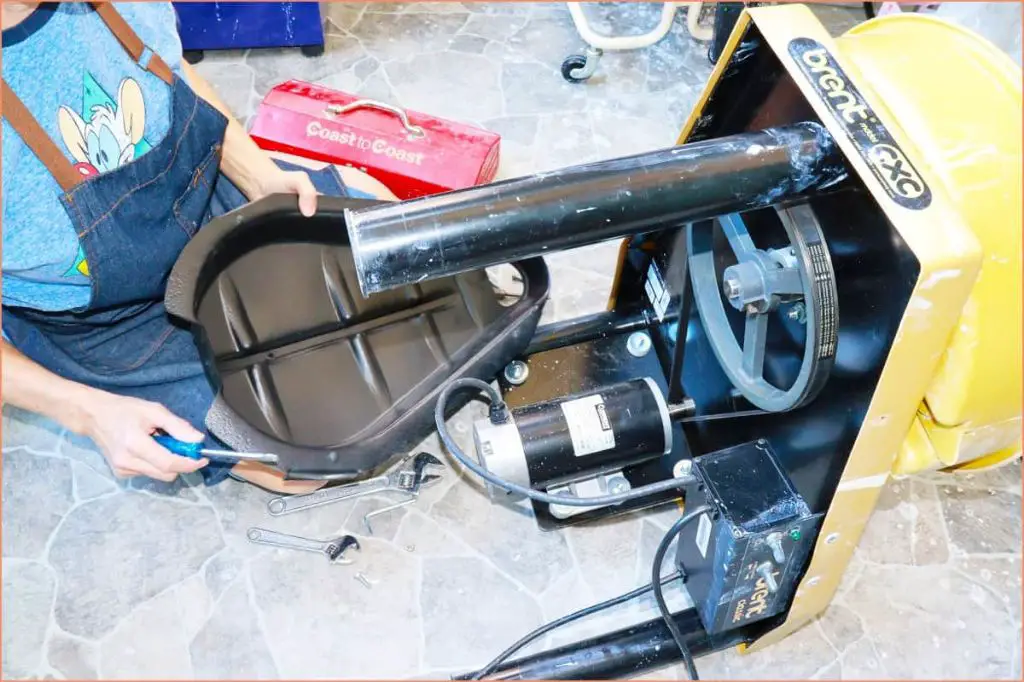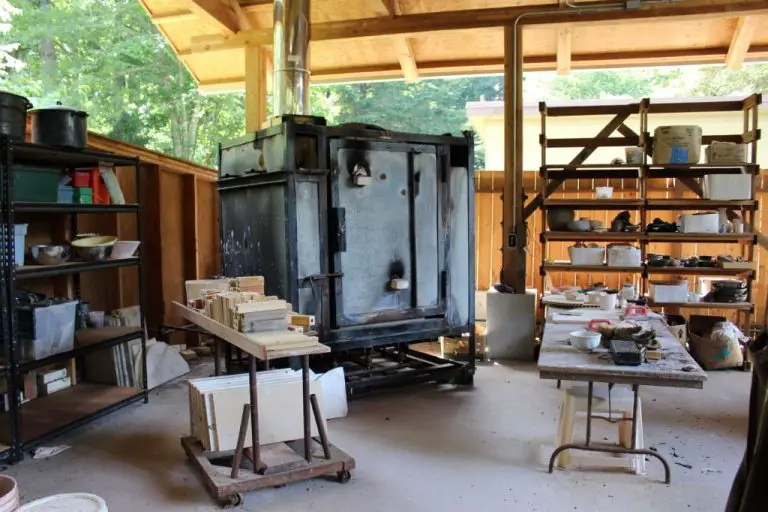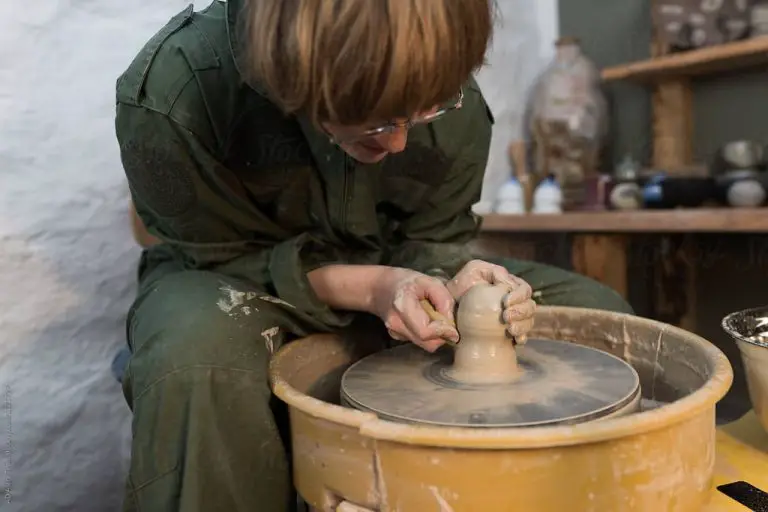How Do I Choose A Potters Wheel?
A potter’s wheel is a tool used in the shaping of round ceramic ware. It allows potters to raise, shape, and smooth clay into symmetrical or evenly formed pieces much more quickly than could be done by hand. The wheel enables a lump of clay to be shaped into perfectly matched pottery while rotating at a constant speed.
Pottery wheels consist of a spinning horizontal disk called a wheelhead that can rotate at various speeds. The clay is centered on the wheelhead, then the potter uses their hands to shape it as it turns, raising the walls vertically and evening them out. Using a pottery wheel allows for perfectly rounded pots, bowls, vases, and other ceramic items to be crafted with ease.
Wheelhead Size
The diameter of the wheel head is an important factor when selecting a pottery wheel. Common wheelhead sizes include:
- Small (10-12 inches) – Smaller wheel heads are more portable and take up less space. They are a good choice for beginners, kids, or those working on smaller projects.
- Medium (12-14 inches) – Medium wheel heads offer a good balance of space and maneuverability. This is the most common size for general pottery work.
- Large (14+ inches) – Larger wheel heads provide ample room for throwing large pieces or multiple pieces at once. These are best for advanced potters doing large-scale work. However, the bigger size can limit mobility.
According to one source, “The diameter of the wheel head is a crucial aspect to consider when selecting a pottery wheel. Common sizes include 30.5 cm (12 inches) and 35.5 cm (14 inches).” [1]
When deciding on wheelhead size, think about your space, needs, and skill level. Beginners may want to start on a small or medium wheel and upgrade later as their skills progress.
Wheelhead Material
The material of the pottery wheel head is an important factor as it affects centering ease, durability, and the finished look of the clay. The three most common materials are:
Metal – Steel and cast iron are durable metals commonly used. Their smooth surfaces make centering clay easy. Metal conducts temperature, so the clay stays cooler. The downside is metal can discolor clay and requires sealing. According to ceramicartsnetwork.org, “Going Batty: How to Choose the Right Bat for Your Work,” plaster bats help prevent clay discoloration on metal wheels.
Plastic – Plastic wheel heads like acetal are affordable options. They withstand moisture well. Plastic can grip clay nicely when textured. However, plastic wheel heads tend to scratch over time. Friction can cause static, according to reddit.com/r/Pottery.
Wood – Wood gives good traction for centering without discoloration. Maple and plywood are common woods. Wood requires sealing to prevent water damage. It can chip over time but is easily resurfaced. Wooden wheels should be solid not laminated for strength, according to ceramicartsnetwork.org.
Centering Mechanism
When it comes to centering clay on the wheel head, there are two main options – manual kick wheels and electric wheels.
Manual kick wheels require the potter to use their foot to turn the wheel head. This takes more physical effort but allows the potter to control the exact speed and force of the wheel motion. Many potters enjoy the hands-on experience and control of kick wheels for centering clay. However, adjusting the speed can be tricky for beginners. Some potters find that kick wheels with a motor assist allow the benefits of both manual and electric wheels.
Electric wheels use an electric motor to turn the wheel head at a consistent speed. This makes centering clay easier physically, especially for longer throwing sessions. Electric wheels allow potters to focus on the clay rather than turning the wheel. However, the set speeds may take some getting used to. Beginners may find electric wheels simpler to learn on. Electric wheels also tend to be slightly noisier than kick wheels.
When choosing between manual and electric centering mechanisms, potters should consider their skill level, desired effort, and any physical limitations. Both options allow skilled potters to center clay effectively.
Speed Control
Having variable speed control is one of the most important features to look for in a pottery wheel. The ideal speed range is 100-150 rpm for basic centering and shaping [1]. However, different techniques require adjusting the speed:
- Higher speeds (~150 rpm) are good for initial centering and opening up clay.
- Slower speeds (100-130 rpm) are better for pulling up walls evenly.
- Very slow speeds (~30 rpm) allow meticulous detailing and trimming of pottery.

Variable speed settings allow potters to fine-tune the wheel speed for different stages of throwing. Look for wheels with a rheostat or pedal that allow smooth, gradual speed changes. Avoid wheels with preset speed settings, as they don’t allow the subtle adjustments needed for throwing. The ability to precisely control wheel speed is crucial for potters learning to “listen” to the clay and develop muscle memory for centering and pulling techniques [2].
Drive Type
There are three main types of drive systems used in pottery wheels: belt drive, direct drive, and gear drive.
Belt drive wheels use a motor that is separate from the wheel head. The motor turns a belt which rotates the wheel head. Belt drive wheels tend to be quieter and lower maintenance since the motor is isolated. However, they can lose some power transfer through the belt so may not be as fast or torquey. Some popular belt drive wheels are the Brent and Shimpo models.
Direct drive wheels have the motor directly integrated into the wheel head. This allows for maximum power transfer and fast speeds. However, vibration from the motor can transfer to the wheel making them nosier. Direct drive wheels like the Speedball are a good choice for experienced potters needing high speeds.
Gear drive wheels use a gear system to transfer power from the motor to the wheel head. They aim to provide the torque of direct drive with the vibration isolation of belt drive. Wheels like the Skutt use a gear drive system.
Wheel Mobility
There are two main options when it comes to the mobility of a pottery wheel – stationary or mobile with locking casters. Stationary wheels are fixed in one position and do not move. This provides the most stability as there is no chance of wobble from the wheel moving. However, stationary wheels lack the flexibility of being able to reposition your workspace.
Wheels with locking casters allow you to move the wheel around and then lock it into place where you want it. The casters provide mobility while the locking mechanism keeps the wheel stable when in use. Locking casters are convenient if you need to store your wheel or want flexibility in setting up your studio. However, even when locked, there is slightly more potential for vibration than a completely stationary stand.
According to Pottery Wheels – A Buyers Guide, most pottery wheels today come with locking casters to provide the benefits of both mobility and stability when needed. Decide whether you will need to move your wheel or prefer maximum stability when choosing between stationary or mobile models.
Other Features
When choosing a potter’s wheel, pay attention to convenience features that can improve the throwing experience:
Splash pans catch excess water and clay that gets flung off the wheel while throwing. They reduce mess and make cleanup easier. Most wheels come with a splash pan, but some high-end models feature splash guards instead.
Foot pedals allow you to start, stop, and adjust the wheel speed hands-free while throwing. This is much more convenient than twisting a speed knob by hand. Most modern wheels have foot pedals.
Adjustable wheel height is useful for accommodating multiple users of different heights. Seat height should align with the center of the wheelhead for optimal throwing position. Some wheels allow the wheelhead height to be adjusted, while others have adjustable seats or built-in risers.
Sources:
https://www.soulceramics.com/pages/what-to-look-for-when-buying-a-pottery-wheel
https://seattlepotterysupply.com/pages/how-to-choose-the-right-pottery-wheel-for-beginners
Budget
When looking at pottery wheels, there are generally three price tiers to consider: entry-level, mid-range, and professional models.
Entry-level pottery wheels typically cost between $200 and $500. At this price point, you’ll get a basic wheel with essential features like variable speed control. Entry-level models are great for beginners or hobbyists on a budget. While lower in price, entry-level wheels like the Brent CXL can still produce quality results in the hands of an experienced potter.
Mid-range pottery wheels cost between $500 and $1000, providing more features and improved performance compared to entry-level models. Wheels in this range often have larger wheelheads, quieter operation, and smoother speed control. Popular mid-range wheels include the Shimpo RK-Whisper and the Soldner S1.
Professional pottery wheels start around $1000+ and are built for intensive, daily use. They provide the highest quality materials, largest wheelheads, and most powerful motors. Leading professional wheel brands include Brent, Shimpo, and Soldner. While expensive, professional wheels can last decades with proper maintenance.
Popular Pottery Wheel Brands
When shopping for a pottery wheel, you’ll likely come across some well-known and reputable brands. Here are some of the top options to consider:
Brent
Brent wheels are known for their durability and smooth rotation. They offer wheels with various wheelhead sizes and features to suit potters of all levels. Some popular Brent models include the Brent CXC, Brent C, and Brent XLs.
Shimpo
Shimpo is a Japanese brand that produces high-quality pottery wheels. Their wheels are powerful, quiet, and easy to use. Top Shimpo models include the Shimpo RK-3, Shimpo RK-5, and Shimpo Whisper.
Skutt
Skutt is an Oregon-based company that manufactures a wide range of ceramic equipment. Their pottery wheels are designed for efficiency and reliability. Well-liked Skutt wheels include the Skutt PK-101, Skutt KT-1218, and Skutt KM-25.
Other notable brands to look for include Creative Industries, Laguna, Bluebird, Pacifica, and Soldner. Do some research to find the brand and model that best fits your budget, experience level, and pottery needs.






